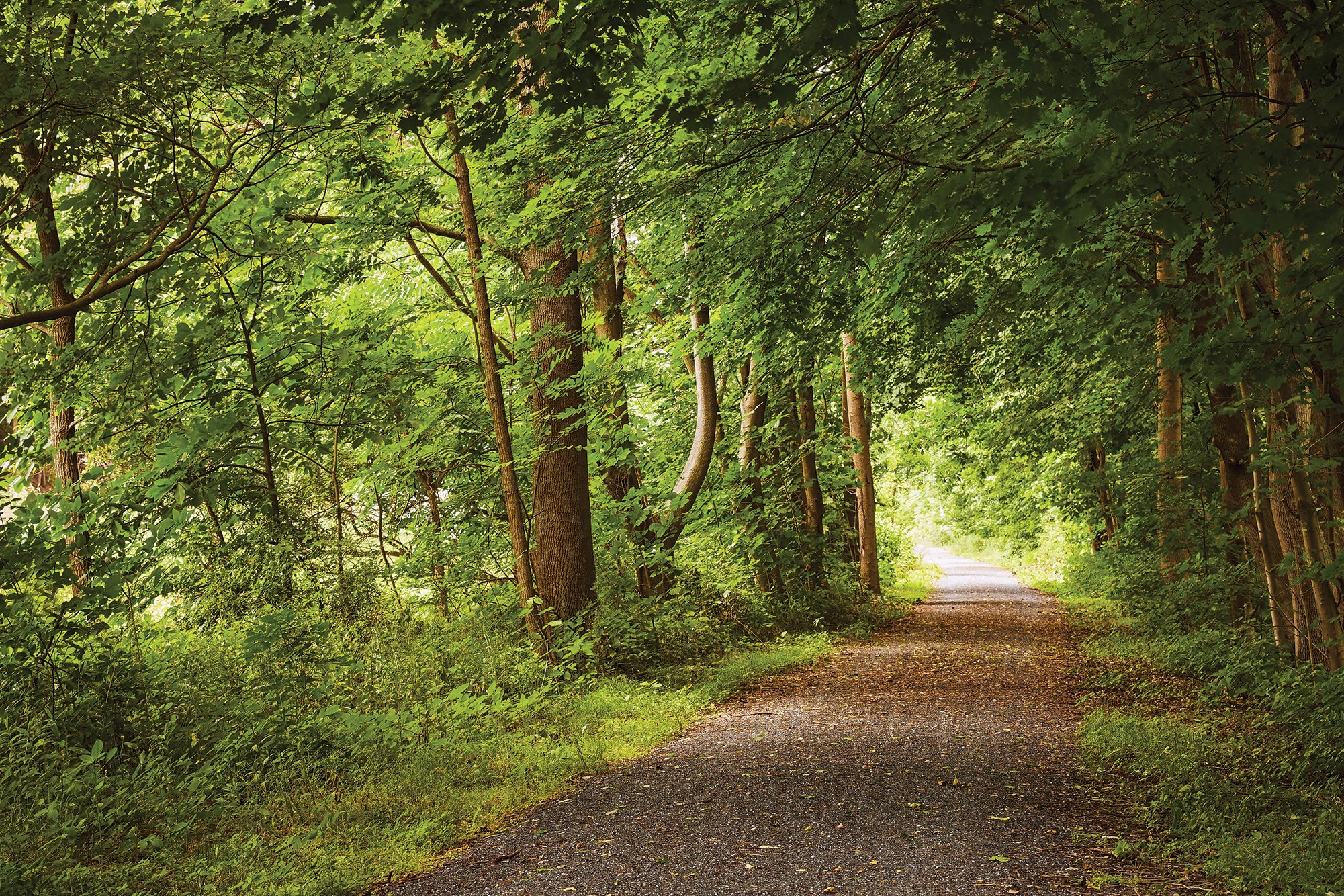See Fossils on These 3 Impressive Hikes

'Alamy Stock Photo'
Richmond Canyon Trail
Berlin Ichthyosaur State Park, NV
Tucked into the western slopes of the Shoshone mountains are the preserved remains of two unlikely neighbors. One is the gold rush town of Berlin; the other a pod of fossilized ichthyosaurs. The early residents of Berlin thought some of the area’s rocks looked odd. But in 1928 (17 years after the town was abandoned), a Stanford geologist finally realized they weren’t “rocks” at all—they were the vertebrae of 50-foot long sea creatures that roamed Nevada back when it was a tropical sea.
Hike It Park at the Fossil House, a building enclosing several ichthyosaur skeletons. The trail starts with a 500-foot climb through sagebrush. Turn northeast at mile .9, then veer west after another .2 mile and descend toward the Richmond Mine. Turn left onto an unsigned dirt road in Union Canyon at mile 1.9 and hike .8 mile back to the parking lot. Want more? Follow an unmarked road where visitors can collect ancient clams for themselves on USFS land (unusual finds must be declared to the local USFS office).
Prairie Trail Loop
Fossil & Prairie Park Preserve, IA
Beneath the swaying grasses of this Midwestern oasis is evidence of another, vanished landscape: coral, clam, and sea snail fossils from 365 million years ago, when everything that is now grassland was shallow sea. Today, you can explore this pristine native prairie before searching for fossils among the rock piles.
Hike It Start by heading northwest from the parking lot on the Prairie Trail for .6 mile. Turn left onto the Creeping Juniper Trail and follow it for .2 mile, where monarch butterflies congregate in early summer. Switch to the Leopold Trail and stay left as you hike a broad loop to the east and south. Hit the Kiln Trail at mile 1.7 as the open grassland turns to clay. Start your search for squid-like cephalopods and sea lilies at mile 3, where the dig sites expose a healthy supply of fossils (you can keep a couple of your finds, but leave the rest for future visitors). Return to the visitor’s center to complete your journey.
Bear Hole Trail
Erosion is the most common method of fossil exposure, but that geological force has nothing on the speed and enthusiasm of amateur paleontologists. One site—the underside of Interstate 81 where it intersects the Appalachian Trail—was attacked so enthusiastically that the bridge itself was deemed unstable. To prevent its collapse, 200 cubic yards of roadside cuttings were trucked to a safer location in Swatara State Park in 2004.
Hike It Follow the Swopes Valley Road .1 mile north from the Swopes Valley trailhead to connect with the Swatara Rail Trail. Follow the Swatara Rail Trail 2.5 miles to Sand Siding Trail. Turn left, and then left again onto the Bear Hole Trail. Hit the Bordner Cabin at mile 5.1, admiring 60-foot Aycrigg Falls from the great room. Take a brief detour onto the Mifflin Trail at mile 6.9 to visit an abandoned water lock, now transformed into a hidden garden, then return to the Bear Hole Trail. Continue on to the fossil site at mile 7.2, searching for starfish and trilobites that lived millions of years ago. Collect only a few fossils, and only from dig sites. From here, it’s a half-mile back to the trailhead.